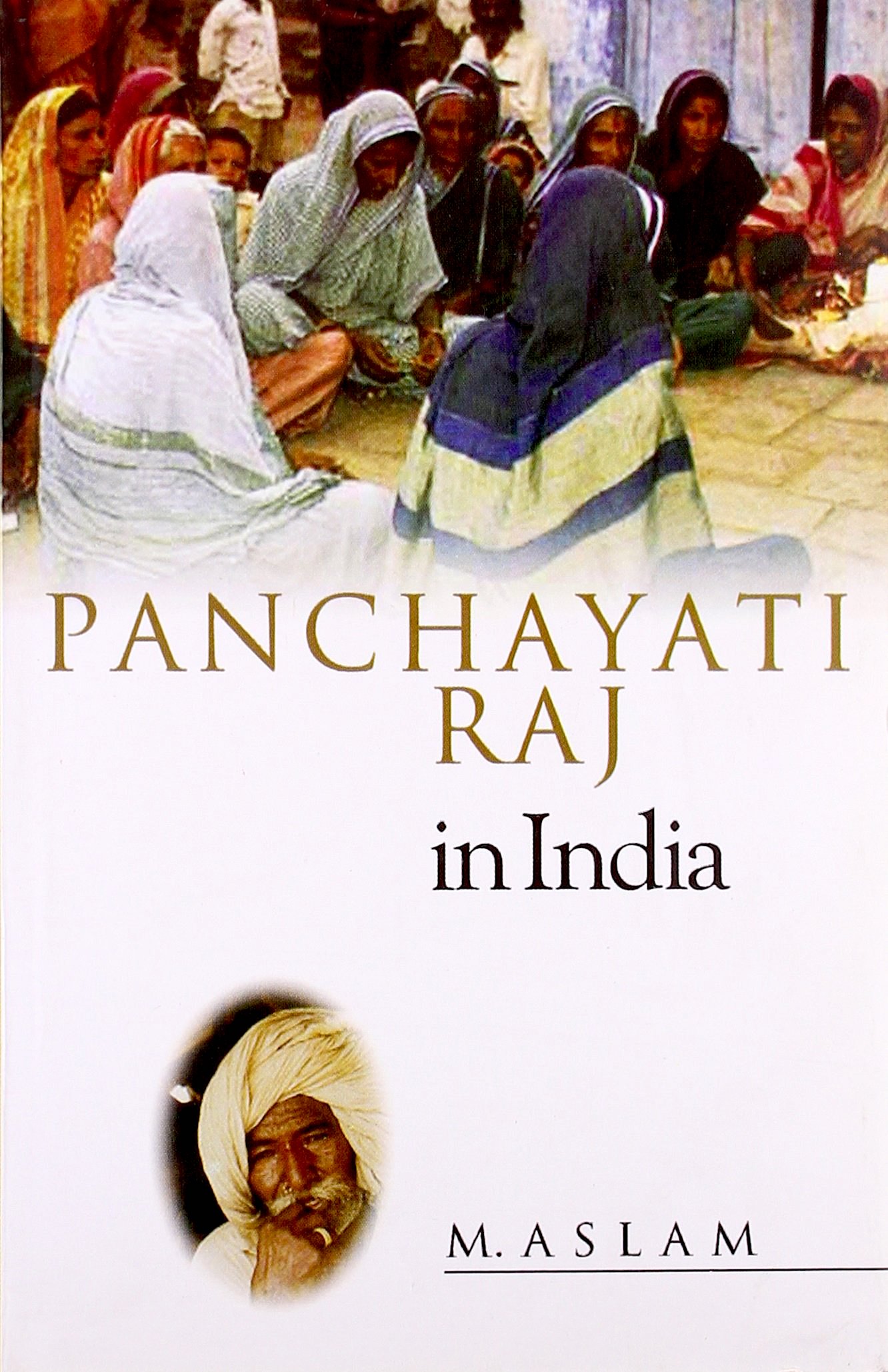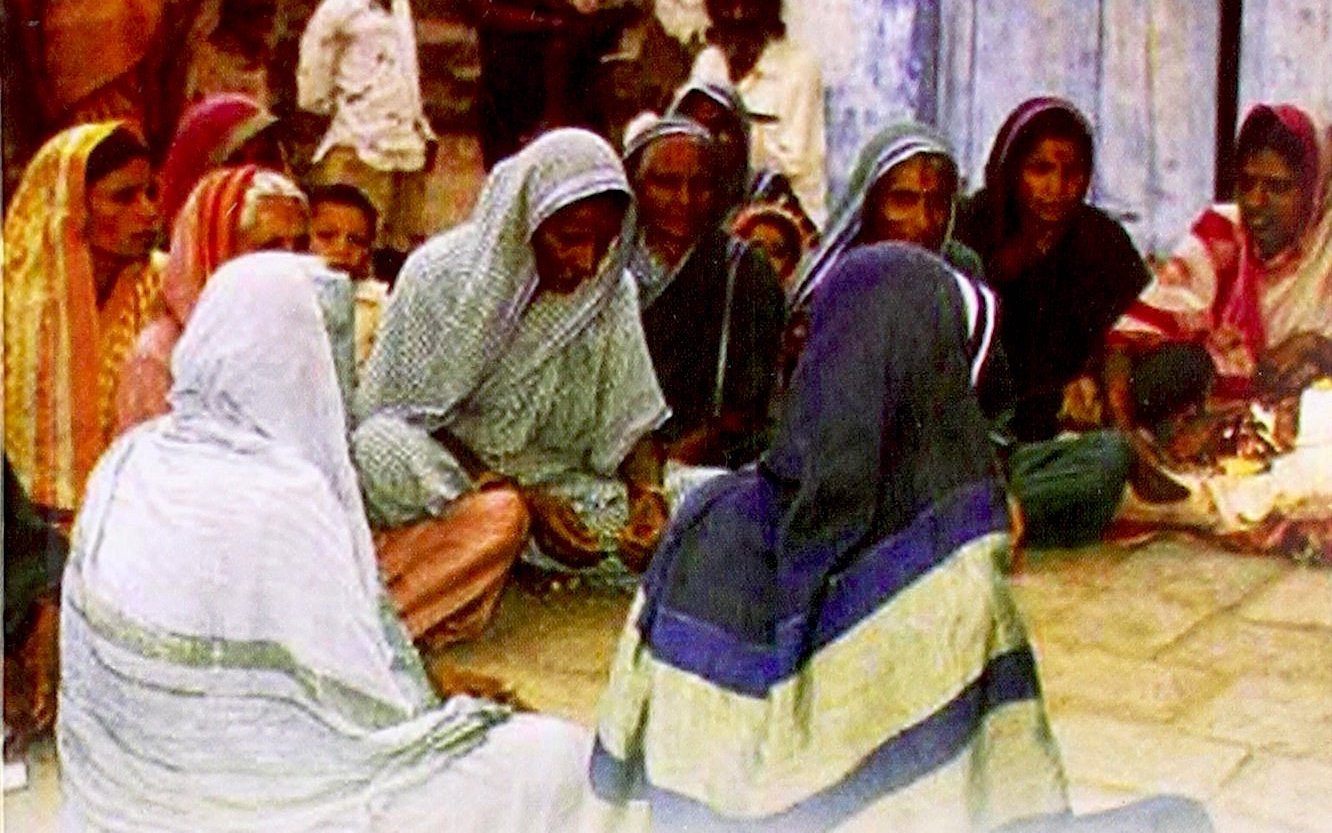By Zeeshan Husain
Book- Panchayati Raj in India
Author- M. Aslam
Publisher– National Book Trust, New Delhi
Panchayati Raj is one of the most discussed political institutions in India. One starts to read about it as an undergrad student of social sciences in most Indian universities. National Book Trust has definitely taken stock of the situation and chose M. Aslam to write a small book on Panchayati Raj (henceforth PR). This book is meant for elected representatives of the Panchayats (p.xii). The volume is slim, the tone is prescriptive, language is simple and the approach is almost like a policy document. All these together bring forth various facets of PR quite comprehensively to the lay readers. M. Aslam has very diligently divided the book into 5 chapters, and a foreword, preface, and annexures. The foreword is written by Mani Shankar Aiyar who was, at that time (2007), the union minister of PR. Half of the book consists of various annexures which contain various important dimensions on Panchayati Raj Institutions (PRIs). Here is a brief outline of the book chapter wise.

The first chapter is titled introduction and outlines the scope of the book. It tells the readers that devolution of power to the local level is actualized through the institution of PR (p.2). This involved a lot of discussions in Parliament and happened step by step through the recommendations of various committees (p.3). PR has two dimensions– economic development and social justice (p.4). Even after one and a half decade of the enactment of PRI, one cannot see any tangible difference in rural India (p.6). Aslam locates this to a number of factors, and one of these is the lack of awareness about the PR (p.7). The book is trying to fill up this gap.
The second chapter traces the history and evolution of PRIs. Aslam starts with pre-British times, goes to British period and elaborates substantially on the post-Independence period. We are told that panchayats existed since Rig Vedic time (p.9). Aslam quotes Charles Metcalfe to say that village republics have existed in India despite all upheavals that any society undergoes in history (pp.9-10). Britishers till Montagu-Chelmsford Reforms (1919) were indifferent to the governance of villages (pp.11-13). Only after this reform, the focus shifted and local self-government was brought under the jurisdiction of the provincial government (pp.13-14). Later, the idea of Gandhi’s Gram Swaraj becomes the most important guiding force behind the PRIs of today (p.15). For Gandhi, to borrow a phrase from E.F. Schumacher, small was beautiful. This could not be materialized immediately after Independence (pp.15-16) as the state was more interested in economic growth through a centralized structure. However, there was also a Community Development Programme in 1952, which focused on local level development (p.17). It failed miserably and led to introspection among policy makers (p.18). Five years later, in 1957, a committee often called the Balvantrai Mehta Committee was formed (p.18). The recommendations of the committee gave, what in today’s context, quite recognizable features of PRIs like 3-tier structure (village-block-district), transfer of power and devolution of human and financial resources to PR, and active participation of people (gram samiti) (p.19). From 1959 to 1964, most states passed respective Panchayat Acts (p.21). PRI’s heyday continued for five years as the government wanted to eliminate poverty and food shortage through strongly centralized government approach. For Aslam, PR system got stagnated between 1965 and 1969 and declined from 1969 to 1977 (p.22). Ashok Mehta Committee was formed in 1977 when the government changed at the Centre and newer politicians wanted more people-centric development (p.23). Many other committees were formed after 1977, and most of them tried to improve upon the earlier recommendations (pp.28-32).
It was only on April 24, 1993, that the Constitution (Seventy-third Amendment) Act, 1992 came into being (p.39). The key features of the Amendment are powerful gram sabha, a three-tier system, reservations of seats for SCs and STs as per population and one third for women, five year terms, elections conducted by State Election Commission, and matters of finance to be taken care of by the Finance Commission in every State (pp.39-42). The Panchayats have to execute various development programs as listed in the Eleventh Schedule of the Constitution, e.g., economic development schemes, education, health, the welfare of women and child, and infrastructure (p.43). The third chapter also describes the Provisions of the Panchayats (Extension to the Scheduled Areas) Act or PESA Act which came into force in 1996. The PESA Act extends panchayats to the tribal areas of ten states namely Andhra Pradesh, Bihar, Jharkhand, Gujarat, Himachal Pradesh, Maharashtra, Madhya Pradesh, Chhattisgarh, Orissa, and Rajasthan (p.44). The chapter ends by analyzing the effects of the Amendment and states that devolution of power has never been materialized, mainly due to the apathy of the State governments (47-49).
In the fourth chapter Aslam mention the two most important principles of local governance. One is that PR is an institution of local self-government and another is that PR is an institution of development (p.51). ‘Power to the people’ mantra has been forgotten by State governments (p.55) and PR has been reduced to the institution of development, a development which is much more top-down than bottom-up. Top-down development needs a helping hand from bottom up as the local socio-economic needs are better understood by common people (p.58). In the end, Aslam explains major poverty alleviation schemes like Swarnajayanti Gram Swarozgar Yojana, Sampoorna Grameen Rozgar Yojana and Indira Awaas Yojana (p.60-76). As mentioned earlier, the book is meant to illuminate the minds of young Panchayat members.
The last chapter argues for shifting in our paradigm of thinking. Aslam asks us to consider the case for a strong panchayat where power is genuinely devolved to the common people in the form of gram sabha. Personnel working for PR cannot be properly controlled by Panchayats. Similarly, various legislators poke their nose into the matters of Panchayats making the functioning difficult. Overall, the chapter pitches for powerful panchayats so that they can be actually a strong third tier of the government.
We have 100 odd pages, which is almost half the book, devoted to the annexure section. Aslam has used 8 annexures which include– the speech by Jawaharlal Nehru on PR, the 73rd Amendment Act, the PESA Act, excerpts from the reports of the Balvantrai Mehta Committee (1957), the Ashok Mehta Committee (1978), the GVK Rao Committee (1985), and the LM Singhvi Committee (1986). This makes it clear that Aslam is very serious about history (read spirit) behind the PR. The book clearly brings forth the idea that Gram Swaraj, a brainchild of Gandhi, should be the ideal to be achieved by any PRIs.
Overall, the book succeeds in conveying the message behind Panchayati Raj to common people and experts alike. I think few reports from the ground could have sharpened Aslam’s arguments. Aslam mentions few but does not delve deep into the diverse socio-politico-economic reality of this archipelago called India. The question of representation through the representation of SCs, STs, and women have been dealt with only tangentially. Many books, including this, fail to address the issue of lack of reservation for OBCs and religious minorities in Panchayats. Apart from few printing mistakes (p. 4- Sta[t]es, p.20- Panchaya[r]ti, p.32- [R]
(Zeeshan Husain is currently pursuing PhD in Social Sciences from JNU)






















